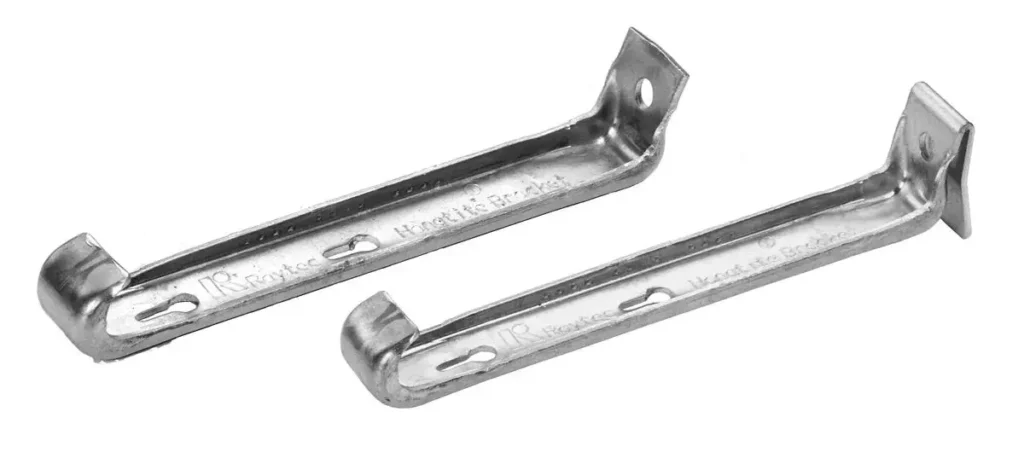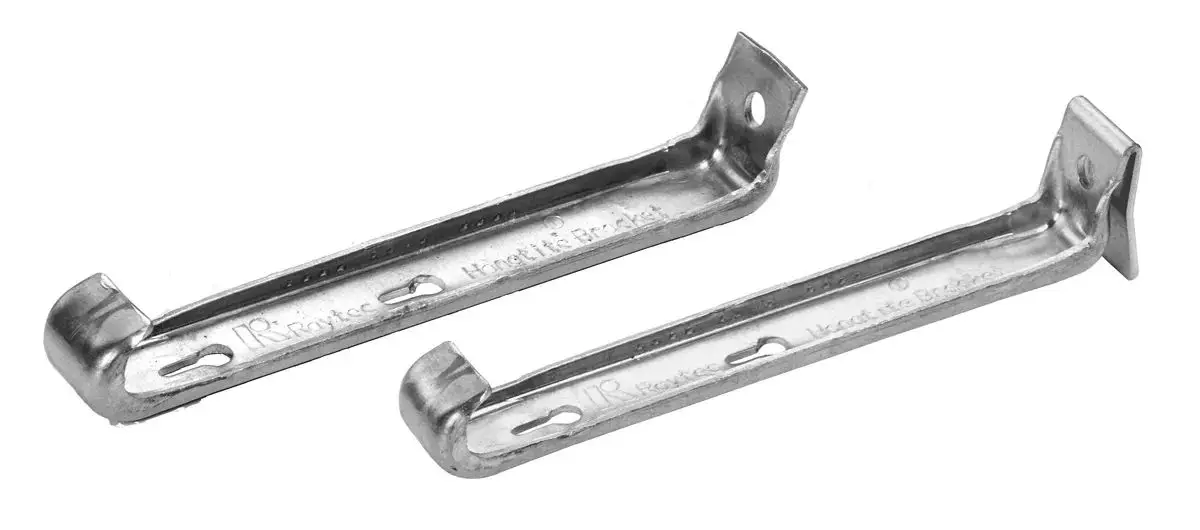
Prevent Gutter Overflow: The Critical Importance of Proper Hanger Spacing
As homeowners, we often focus on the visible aspects of our houses: the freshly painted walls, the manicured lawns, the stylish décor. Yet, some of the most crucial elements for protecting our homes from the elements remain out of sight, out of mind. One such element is the gutter system, a vital component in channeling rainwater away from the foundation. Within this system, the seemingly simple task of installing and maintaining gutter hangers, and specifically, ensuring proper hanger spacing, plays a pivotal role in preventing a cascade of problems. This article delves into the significance of preventing gutter overflow by focusing on the often-overlooked aspect of proper hanger spacing.
The Consequences of Neglecting Gutter Maintenance
Before we examine the specifics of proper hanger spacing, it’s essential to understand the potential repercussions of neglecting your gutters. Clogged gutters, a common issue, can lead to water backing up and overflowing, causing a variety of costly issues:
- Foundation Damage: Water overflowing from gutters can seep into the foundation, causing cracks, leaks, and structural instability. This is one of the most severe consequences.
- Erosion: Runoff can erode the soil around the foundation, undermining its stability and potentially damaging landscaping.
- Siding and Fascia Damage: Overflowing water can saturate siding and fascia boards, leading to rot, peeling paint, and costly repairs.
- Roof Damage: Clogged gutters can cause water to back up under the shingles, leading to leaks and damage to the roof deck.
- Basement Flooding: In severe cases, overflowing gutters can contribute to basement flooding, causing significant property damage and health hazards.
- Insect Infestation: Standing water in clogged gutters provides a breeding ground for mosquitoes and other pests.
These problems underscore the importance of regular gutter maintenance, including cleaning, inspection, and, critically, ensuring the structural integrity of the gutter system itself. Preventing gutter overflow starts with understanding how the system functions and the role each component plays.
The Role of Gutter Hangers
Gutter hangers are the unsung heroes of your home’s water management system. They are the brackets that attach the gutters to the fascia or roof, providing the necessary support to hold the weight of the gutters, water, and debris. Without properly installed and spaced hangers, gutters can sag, detach, and ultimately fail to perform their essential function. This is where proper hanger spacing becomes so important.
The type of gutter hangers used can vary. Common types include:
- Hidden Hangers: These are designed to be less visible and offer a clean aesthetic. They are often used with seamless gutters.
- Clip-on Hangers: These are typically used with sectional gutters and clip onto the gutter’s edge.
- Wrap-around Hangers: These are also used with sectional gutters and wrap around the gutter and the fascia board, providing significant support.
Regardless of the type, the primary function remains the same: to support the gutter and maintain its proper alignment and slope. The choice of hanger type often depends on the gutter material (aluminum, copper, vinyl, etc.) and the architectural style of the home. However, the principle of proper hanger spacing remains constant.
Why Proper Hanger Spacing Matters
The primary reason for adhering to proper hanger spacing is to distribute the weight of the gutter system evenly. When gutters are filled with water, ice, and debris, they can become incredibly heavy. If hangers are spaced too far apart, the gutters will sag between the hangers, creating low spots where water can pool. This pooling water adds extra weight, accelerates corrosion, and increases the risk of overflow. Furthermore, sagging gutters are more likely to detach from the fascia during heavy rain or snowstorms. Preventing gutter overflow depends on the structural integrity of the system, and proper hanger spacing is fundamental to this.
Incorrect spacing can also lead to:
- Gutter Sagging: This is the most obvious consequence, leading to inefficiency and aesthetic issues.
- Increased Strain on Hangers: Over time, this strain can cause hangers to fail, leading to gutter detachment.
- Reduced Water Flow: Sagging gutters impede the efficient flow of water, increasing the risk of clogs and overflow.
- Aesthetic Issues: Sagging gutters are unsightly and can detract from the overall appearance of the home.
By ensuring proper hanger spacing, homeowners can significantly extend the lifespan of their gutter system and protect their homes from water damage. Remember, preventing gutter overflow is a proactive measure that can save significant money and hassle down the line.
Determining the Correct Hanger Spacing
The ideal hanger spacing varies depending on several factors, including the type of gutter material, the climate in your area, and the manufacturer’s recommendations. However, some general guidelines apply:
- Gutter Material: Heavier materials like steel and copper often require closer spacing than lighter materials like aluminum or vinyl.
- Climate: Areas with heavy snow and ice buildup may require closer spacing to handle the added weight.
- Gutter Size: Larger gutters, designed to handle more water, may need closer spacing to maintain their structural integrity.
- Manufacturer Recommendations: Always consult the manufacturer’s instructions for specific recommendations regarding hanger spacing. This is often the most reliable source of information.
As a general rule, the following spacing guidelines are often used:
- Aluminum Gutters: Typically spaced every 24 to 36 inches.
- Steel Gutters: Typically spaced every 24 to 30 inches.
- Copper Gutters: Typically spaced every 24 to 30 inches.
- Vinyl Gutters: Typically spaced every 24 to 36 inches.
It’s crucial to measure accurately and mark the locations for the hangers before installation. This ensures that the spacing is consistent and that the gutters are properly supported along their entire length. Remember, the goal is to ensure proper hanger spacing to prevent any potential issues.
The Installation Process: A Step-by-Step Guide
While professional gutter installation is often recommended, understanding the installation process can help homeowners oversee the work and ensure it’s done correctly. Here’s a simplified overview:
- Preparation: Measure the length of the gutters and determine the correct hanger spacing based on the gutter material, climate, and manufacturer’s recommendations.
- Marking: Using a measuring tape and a level, mark the locations for the hangers on the fascia board or roof. Ensure that the marks are level and consistent.
- Installation: Install the hangers according to the manufacturer’s instructions. This may involve screwing or nailing the hangers to the fascia or roof. Make sure that the hangers are securely fastened.
- Gutter Placement: Once the hangers are installed, place the gutters into the hangers, ensuring they are properly seated and aligned.
- Securing: Secure the gutters to the hangers, typically using clips or screws.
- Testing: After installation, test the gutter system by pouring water into the gutters to ensure proper drainage and that there are no leaks.
If you are not comfortable with this process, it’s always best to hire a qualified professional. However, by understanding the steps involved, you can ensure that the job is done correctly and that proper hanger spacing is maintained.
Beyond Installation: Maintaining Your Gutters
While proper hanger spacing is critical for the longevity of your gutter system, it’s only one piece of the puzzle. Regular maintenance is essential to ensure that your gutters continue to function effectively. This includes:
- Regular Cleaning: Clean your gutters at least twice a year, or more frequently if you live in an area with many trees. Remove leaves, twigs, and other debris that can clog the gutters and prevent water from flowing freely.
- Inspection: Inspect your gutters regularly for any signs of damage, such as cracks, leaks, or sagging.
- Repair: Address any damage promptly to prevent it from worsening. This may involve patching leaks, replacing damaged sections of gutter, or re-securing loose hangers.
- Gutter Guards: Consider installing gutter guards to reduce the amount of debris that enters the gutters. While not a replacement for regular cleaning, gutter guards can significantly reduce the frequency with which you need to clean your gutters.
By implementing these maintenance practices, you can significantly extend the lifespan of your gutters and protect your home from water damage. Remember, preventing gutter overflow is an ongoing process that requires diligence and attention to detail.
When to Call a Professional
While some homeowners may be comfortable with DIY gutter maintenance, there are times when it’s best to call a professional. This is especially true if:
- You are uncomfortable working at heights. Gutter maintenance often requires working on a ladder, which can be dangerous.
- You are unsure about the condition of your gutters. A professional can assess the condition of your gutters and identify any potential problems.
- You are dealing with complex repairs. Complex repairs, such as replacing entire sections of gutter, are best left to the professionals.
- You need help with installation. If you are installing a new gutter system, a professional can ensure that it is installed correctly and that proper hanger spacing is maintained.
A qualified gutter professional can provide expert advice, perform necessary repairs, and ensure that your gutter system is functioning optimally. Their expertise can help you avoid costly mistakes and protect your home from water damage. By choosing a professional, you are ensuring that you are taking steps to prevent gutter overflow and protect your investment.
Conclusion: The Importance of Proactive Gutter Care
In conclusion, maintaining a functional gutter system is a crucial aspect of homeownership. The simple act of ensuring proper hanger spacing plays a significant role in preventing a range of costly and damaging problems. From foundation damage to roof leaks, the consequences of neglecting your gutters can be severe. By understanding the importance of proper hanger spacing, as well as the overall maintenance of your gutter system, you can protect your home from water damage and extend its lifespan.
Remember to regularly clean your gutters, inspect them for damage, and address any issues promptly. Consider using gutter guards to reduce the frequency of cleaning. And, when in doubt, don’t hesitate to call a professional for assistance. By taking these proactive steps, you can safeguard your home and enjoy peace of mind knowing that your gutters are working effectively. Preventing gutter overflow is not just about aesthetics; it’s about protecting your most valuable asset – your home. Prioritizing proper hanger spacing is a key element in achieving this goal.
[See also: Gutter Cleaning Tips, Choosing the Right Gutter Material, Signs Your Gutters Need Repair]


